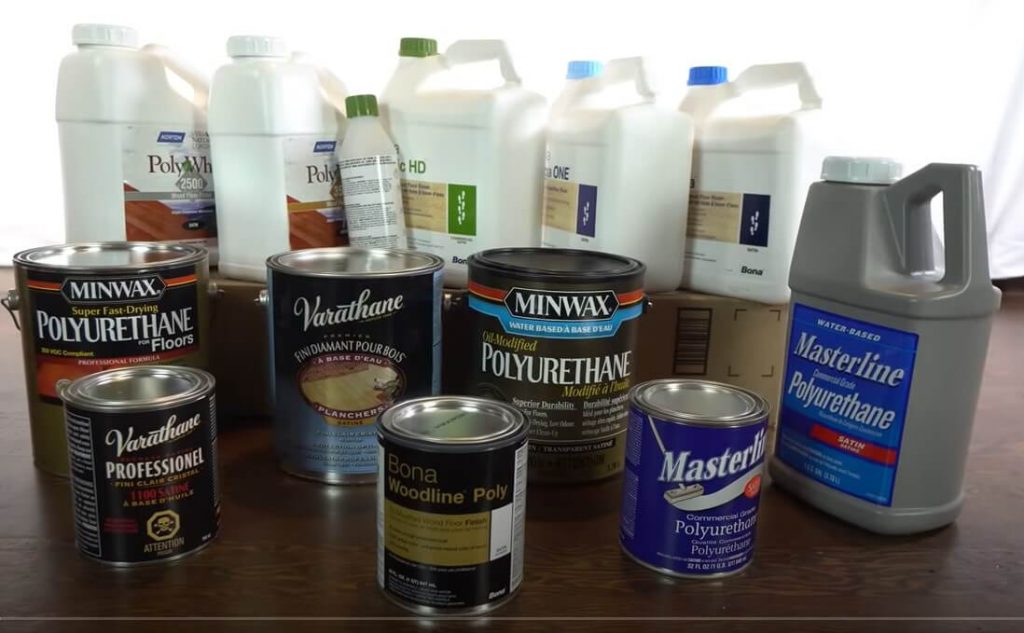If you’re planning on building a plywood workbench, you might be wondering how to finish it. A workbench is a heavily used surface that needs to be durable and resistant to damage. In this article, we’ll explore the best finishes for plywood workbenches.
Consider Adding a Hardboard Top
Before we dive into finishes, it’s worth noting that if you haven’t already built your workbench, you might want to consider adding a hardboard top. Plywood surfaces can be easily damaged by dings and scratches, and once they’re damaged, they’re difficult to repair. On the other hand, a hardboard top is much more durable and can be easily replaced if it gets severely damaged.
Avoid Film Finishes

Film finishes like lacquer, shellac, varnish, or poly varnish may look great initially, but they are not the best choice for workbench tops. A workbench is likely to get scratched and dinged, and film finishes can crack, craze, or be otherwise damaged. Once a film finish is penetrated, it loses its effectiveness and adjacent areas begin to fail. No treatment can make a softwood benchtop harder.
Boiled Linseed Oil and Wax Finish for plywood workbench
One effective “in the wood” finish for a plywood workbench is a boiled linseed oil and wax finish.
Klean-Strip Green GLO45 Boiled Linseed Oil is a natural, eco-friendly finish that is perfect for a plywood workbench. Made from all-natural flaxseed oil, this boiled linseed oil is a popular choice among woodworkers for its ability to protect and nourish wood, while also enhancing its natural beauty.
When applied to plywood, Klean-Strip Green GLO45 Boiled Linseed Oil penetrates deep into the wood fibers, creating a protective layer that helps prevent, scratches, and other forms of wear and tear. It also helps to bring out the natural color and grain of the wood, giving your plywood workbench a warm and inviting look.
Here’s how to apply boiled linseed oil to a workbench:
- Sand the surface to 180 grit.
- Mix paraffin or beeswax into heated boiled linseed oil. Use a double boiler to heat the oil.
- The ratio is not critical, but about 5-6 parts of boiled linseed oil in a double boiler with one part paraffin or beeswax shaved in.
- Take it off the stove and thin the mixture about 50/50 with mineral spirits to make a heavy cream-like liquid.
- Apply this mixture to the benchtop liberally and allow it to set overnight.
- Repeat the application process for the next two days if the top continues to absorb the mixture.
- After the final overnight, lightly scrape off any excess wax and buff.
This finish will minimize the absorption of any water and you can use a damp rag to wipe up any glue excess. Dried glue will pop right off the surface. Renewal or repair is easy. Just use a scraper to remove any hardened material, wipe down with mineral spirits using a 3/0 steel wool pad (a non-woven green or gray abrasive pad is better), wipe off the gunk, and apply another coat of the mineral oil/wax mixture.
Oil/Varnish Mixture Treatment
Another effective “in the wood” finish is an oil/varnish mixture treatment.
If you're looking for a durable and long-lasting finish for your plywood workbench, Tried & True Varnish Oil is an excellent option to consider. This finish is made from all-natural ingredients, which means that it's safe for use in a wide range of environments and won't release harmful chemicals or fumes.
One of the key benefits of Tried & True Varnish Oil is that it creates a beautiful, natural-looking finish that enhances the grain and texture of the wood. It penetrates deep into the surface of the plywood, providing protection against scratches, dents, and other types of damage that can occur during everyday use.
How to apply varnish to a workbench:
- Apply a thin coat evenly with a lint-free cloth.
- Allow to penetrate for 60 minutes.
- Rub briskly with cloth until dry before curing.
- Burnish with steel wool before every coat.
- Repeat for desired sheen and protection. Use soft Shammy and Murphy’s Oil Soap for maintenance.
To prevent glue from sticking, apply a coat of furniture paste wax and you’re done. This treatment is somewhat more protective than the wax and mineral oil treatment as the varnish component adds some protection from not only water but also some other chemicals. The waxing makes the surface a little more impervious to water so you can wipe up any liquid adhesive. It also allows the hardened adhesive to be scraped off.
Maintenance and Renewal
Both of the above treatments are quite protective but are easy to maintain and renew. They do not fail when the surface takes a ding. To renew the finish, simply go through the same scraping, wiping down with mineral spirits and reapplication of the BLO/varnish/mineral spirits mixture and an application of paste wax.
In conclusion
When choosing a finish for your plywood workbench, it’s essential to consider durability and renewability. Film finishes such as lacquer, shellac, varnish, or poly varnish are not recommended as they can crack or craze when the benchtop is dinged. Instead, “in the wood finishes” such as wax and mineral oil mixture or oil/varnish mixture are preferred for their durability and renewability. Whatever finish you choose, make sure to maintain it regularly to keep your workbench looking new for years to come.
Related reading

